How to produce the best rocket engines in the world
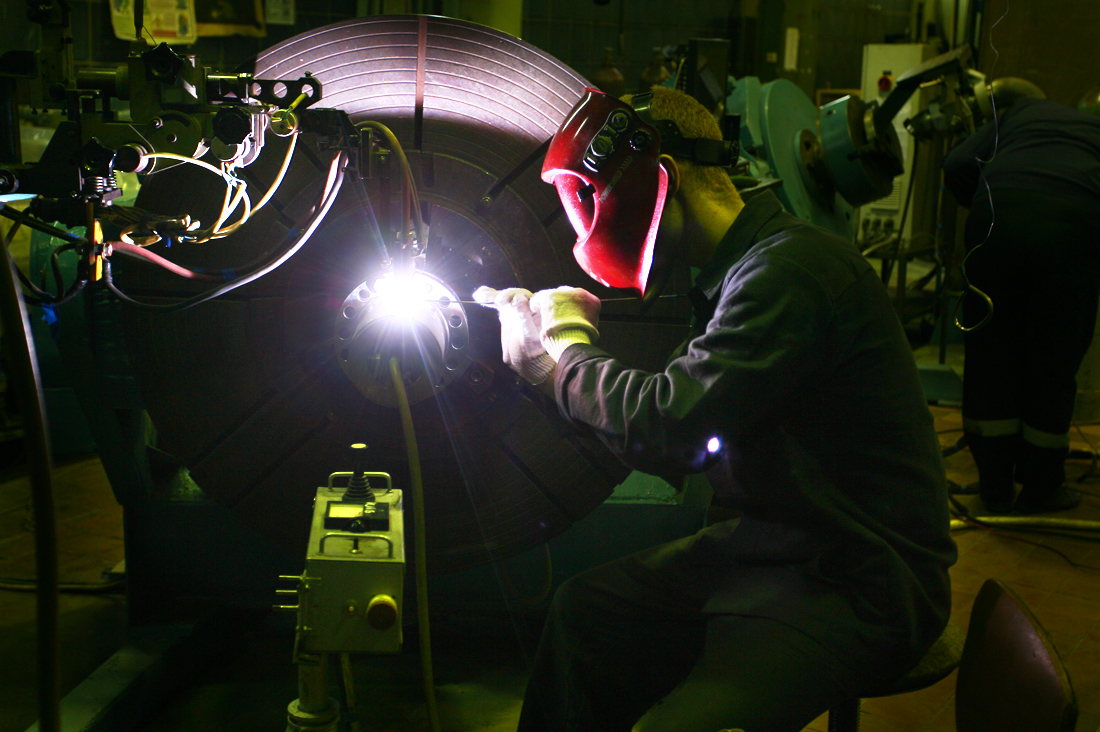
We continue the tour of the Khimki NPO "Energomash". In the previous series, we visited their showroom , and now we will go through the enterprise itself.
Last time I was criticized for the loud epithet "best engines." I agree that it would be more correct to call "The best oxygen-kerosene engines ...", but I did not want to overload the headline. Someone may not agree with this clarification, but after the first reportage the good news came for Energomash - the American company Orbital Scienses ordered 60 RD-181 engines for its Antares rocket after the Samara engines failed at the start . But this is a topic for another discussion, but for now we are advancing to the workshop.
We must pay tribute to the organizers of the excursion: all the heads of the workshops were warned, they were waiting for the guests and were happy to talk about the contribution of their workshop to the creation of the most complex engines.
')
At first we moved to the test stands. This is a multi-storey building, which was inherited from the Soviet Union. And it is the "super-weapon" that allows Energomash to create the most efficient oxygen-kerosene rocket engines.
In the "hallway" is installed the old combustion chamber from the "V-2" - in memory of how it all began.

We rise on the elevator and go out into the dark hall, resembling an ordinary factory floor, but a third of the entire volume is occupied by a giant bell stand.
When we arrived, there were no engines on the stand, and it was closed with a heavy plug.
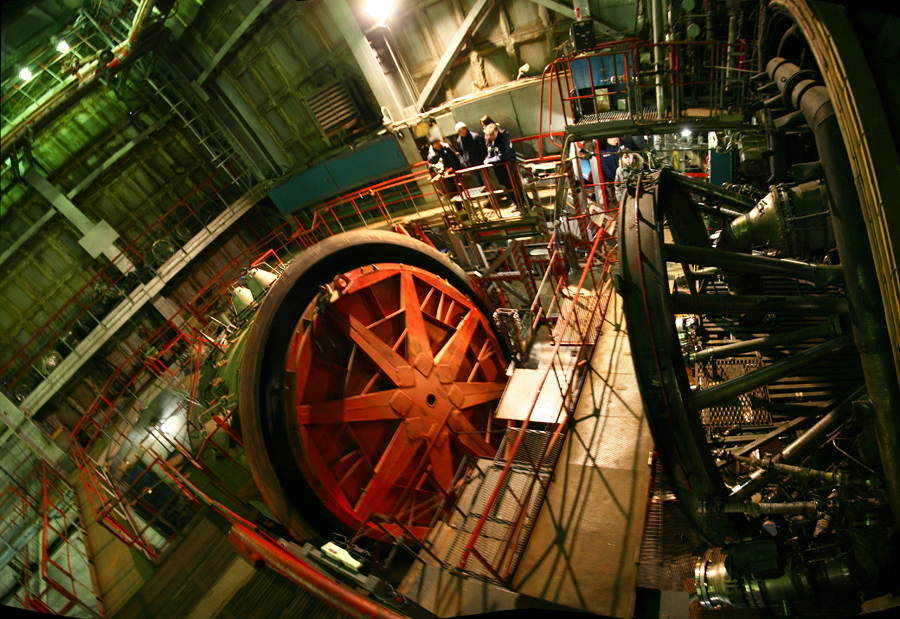
Engineers talked about how it was created, how the most powerful RD-170 engines in the world tested it, then reworked it under the RD-180 for the American order, and then under the RD-191 for the "Angara".
And I looked at this cyclopean structure and thought about how well it was that it was possible to keep it throughout the 90s, not to cut it for scrap or simply not to rot. Now the construction of such a structure would have cost hundreds of millions of dollars, would have turned into a long-term construction like the "Vostochny", overgrown with corruption scandals and protests of environmentalists ... But none of this happened. The plant is working, the rockets are flying, the test bench is in action.
Here, on the site of the NPO "Energomash" there was a good film about the RD-170, its production and testing:
Although offhand it is difficult to understand the intertwining of pipelines, but from the basic functions of the stand it is possible to understand what is needed there. Exhaustive illegal photo report from the same place is known to many LJ users.
At the stand, oxygen-kerosene engines are tested, so the entire infrastructure around it is created for this purpose. Kerosene and oxygen are fed from the tanks, while a powerful fiery jet immediately mixes with the tremendous streams of water, which quench the vibrations and bind the harmful products of combustion at the chemical level. In case something goes wrong, the automation stops fuel access, and the network of injectors fills the test chamber with non-combustible nitrogen, interrupting the possibility of uncontrolled ignition. Nitrogen is used to pressurize the fuel and create operating conditions similar to the conditions in the rocket.
The system, apparently, is effective; if the engines exploded in it, the consequences of the accidents left no trace.

After inspecting the stand, we get out onto the roof, where from the height of a ten-story house you can see two huge chimneys of test benches, associated buildings and the neighborhood of Khimki.
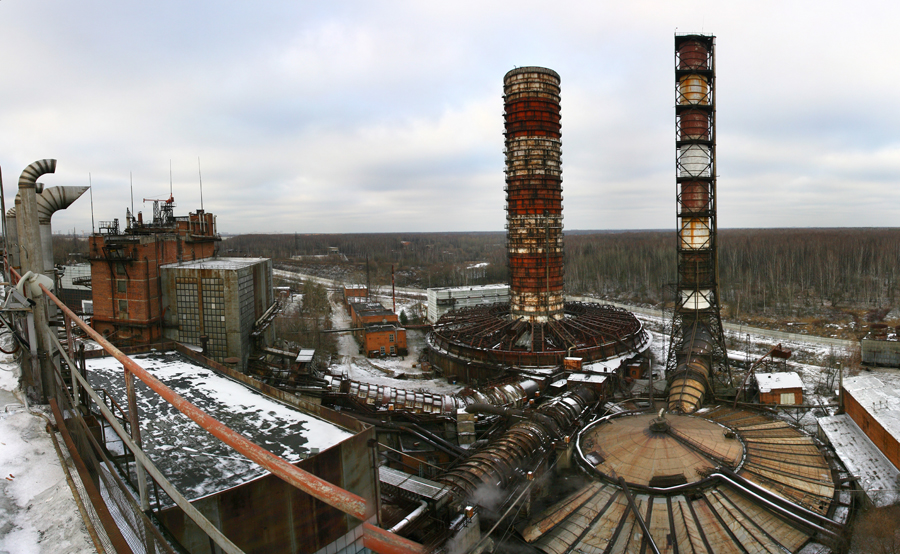
When, in Soviet times, engines for Proton and military rockets were tested on the stands, the environmental situation in the vicinity was not the healthiest. In general, of course, it is surprising that the testing of engines for such toxic components, conducted so close to the largest city in the country. But now it is difficult to understand the logic of those times, then everything was justified by the work on the "nuclear shield of the country", therefore they were not considered possible victims.
Now they are experiencing only oxygen-kerosene engines, and we can not worry about ecology. At the entrance to the test case, they even showed me a squirrel feeder - a symbol of the purity of the surroundings. In general, during the stay on the test site, the word "ecology" sounded repeatedly - a sore question for the employees of the enterprise is evident, although I did not even ask it.
“Do not take the right,” one of the technical staff of the company asks me, pointing to the unfinished building, “They will tell the ruins.”
The second explains:
- This is a new test case for reusable space systems. Seen how Americans are going to put ships on rocket engines? So we did this back in the eighties. They built test benches for landing rocket engines, but they never completed it ...
- Are they not going to finish building?
- The company has no money, and there is no order. Now only if you, young people, take up such a task ...
Thinking about missed opportunities we move to the other side of the roof. From there you can see spherical tanks for oxygen, cylindrical - for nitrogen, kerosene tanks just to the right, did not get into the frame.
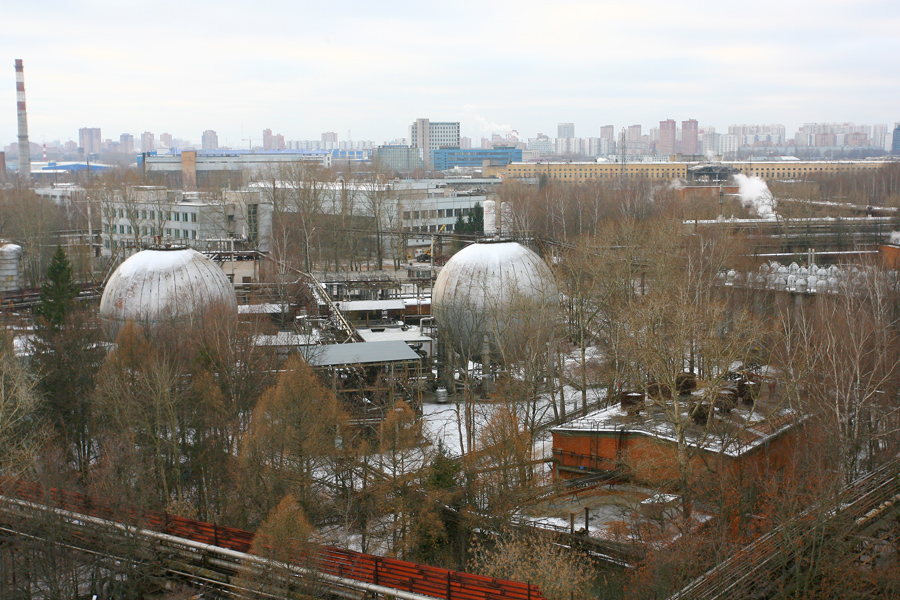
Finally move to production.
The first program is a welding shop. A young welder is preparing a machine. After a couple of minutes - he was already at work - a photo at the beginning of the text.
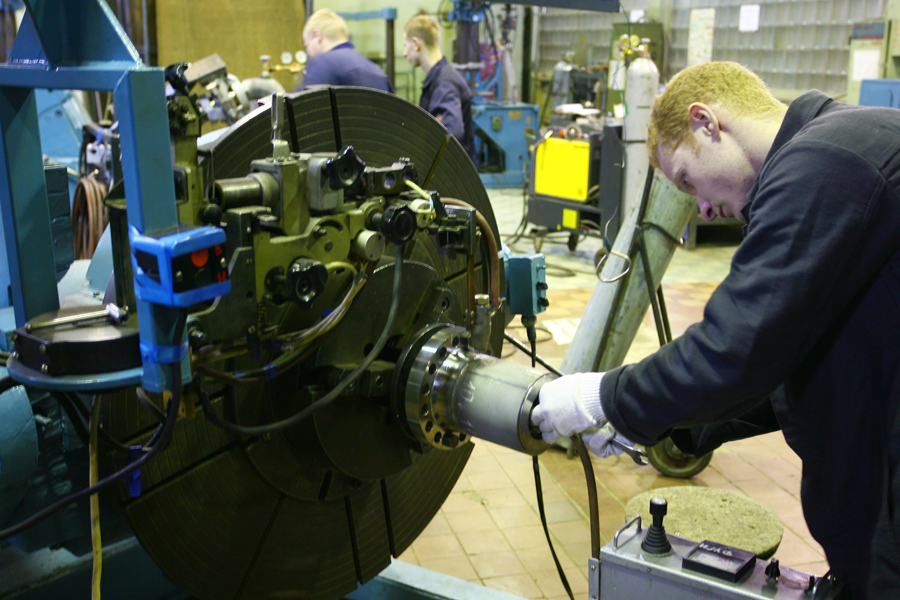
In the next room - automatic welding machine. In the foreground, specialists are busy working.
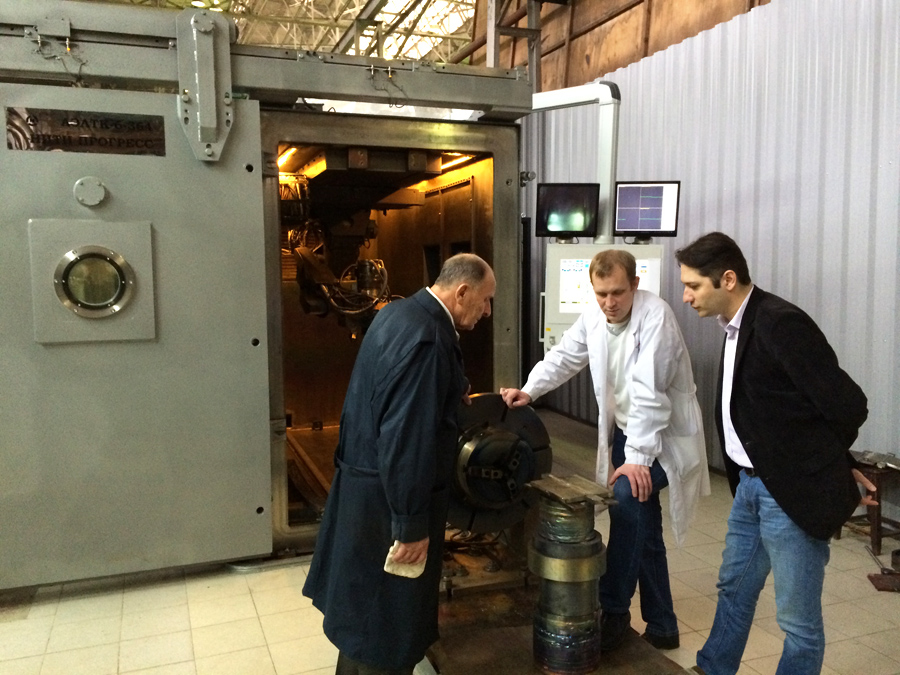
By the way, another observation about the age of employees. For other space enterprises there is the problem of the lack of middle-aged specialists. As, for example, NPO Lavochkina. The problem comes from the 90s, when the most active left the enterprises. Now young people have come, but they are just gaining experience, and learning wisdom from those who still remember the storming of the Moon, Mars and Venus in the 70-80s.
On the "Energomash" age gap unnoticed. Apparently affected by the contract of the 90s for the supply of engines for the Atlas-V American space program. The order saved the company from brain drain and hands in difficult times, although it became profitable only by 2012.
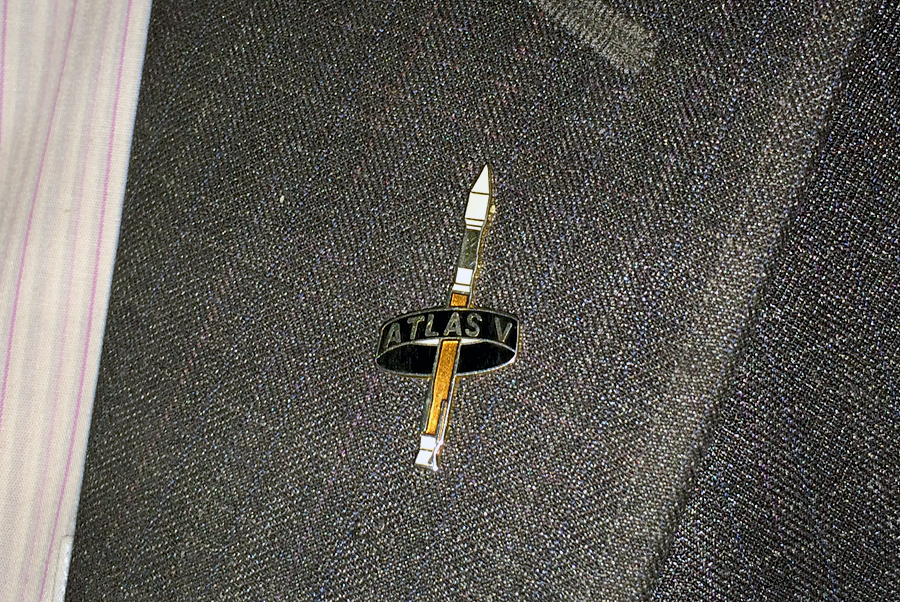
And the brains and hands in the enterprise, as well as in space, are very important. Almost in every shop posters are reminiscent of the importance of product quality, the need to observe safety and accuracy.
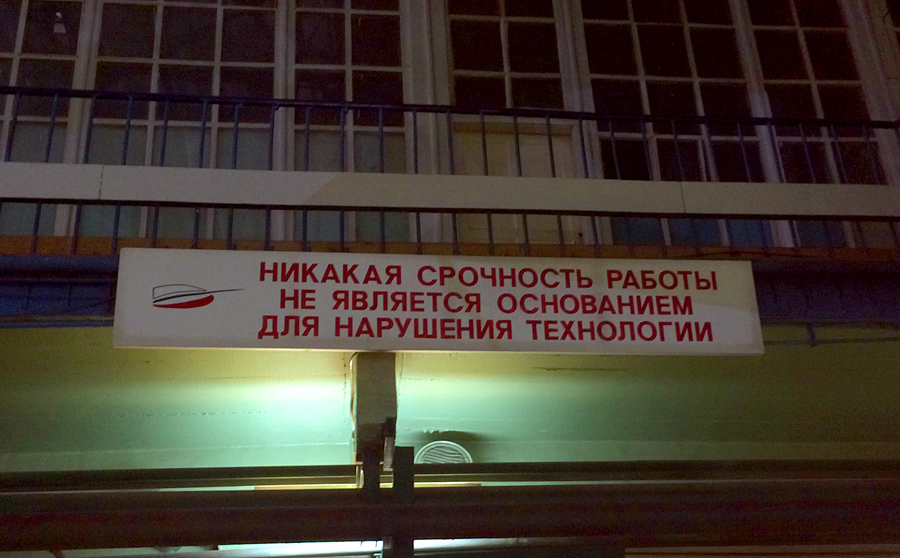

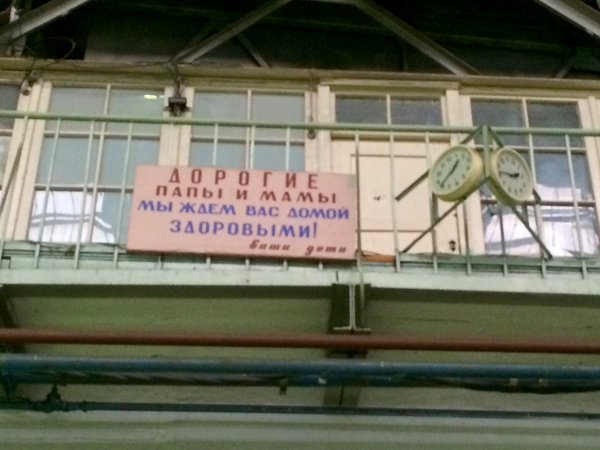
We go through different production lines. Here master Andrew checks the quality of the welding seam of titanium balls:
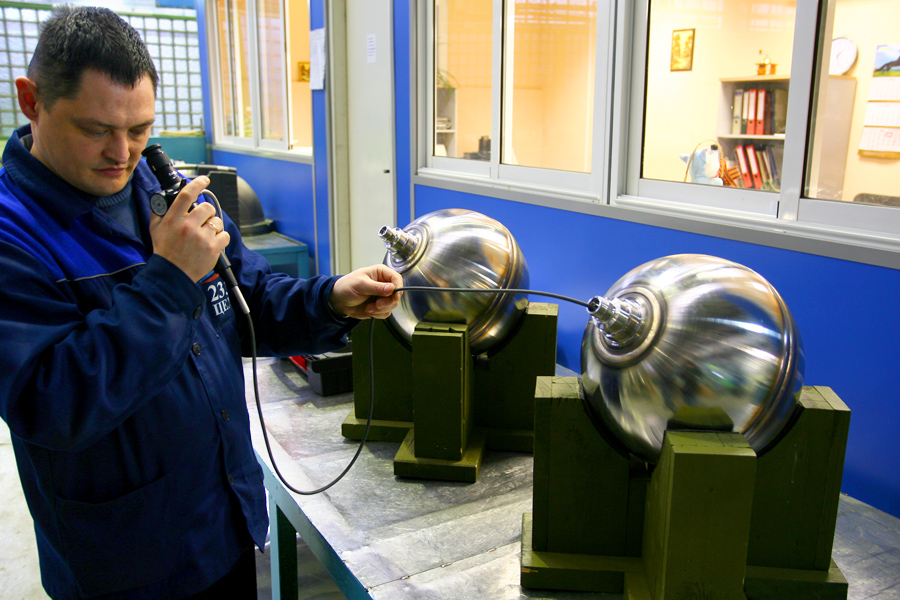
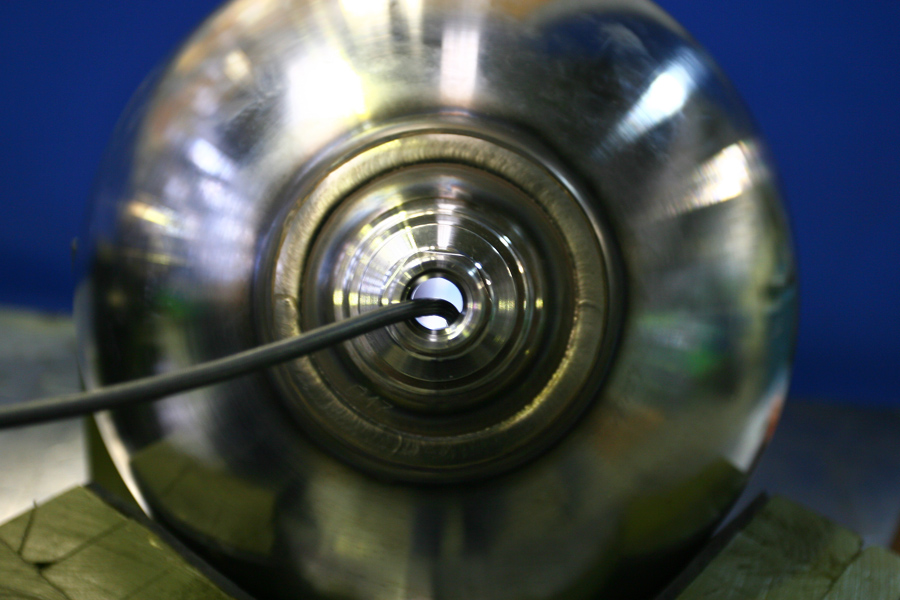
Nearby there are familiar bellows connections from the first part of the report. The unique design of "Energomash" is used both for mounting the combustion chamber, on the swinging gimbal,

and for individual pipeline connections.

We go in the blacksmith shop.
Yes, the most complex engine design, with its micron tolerances, enormous loads and high precision manufacturing, grows out of such stainless steel discs.
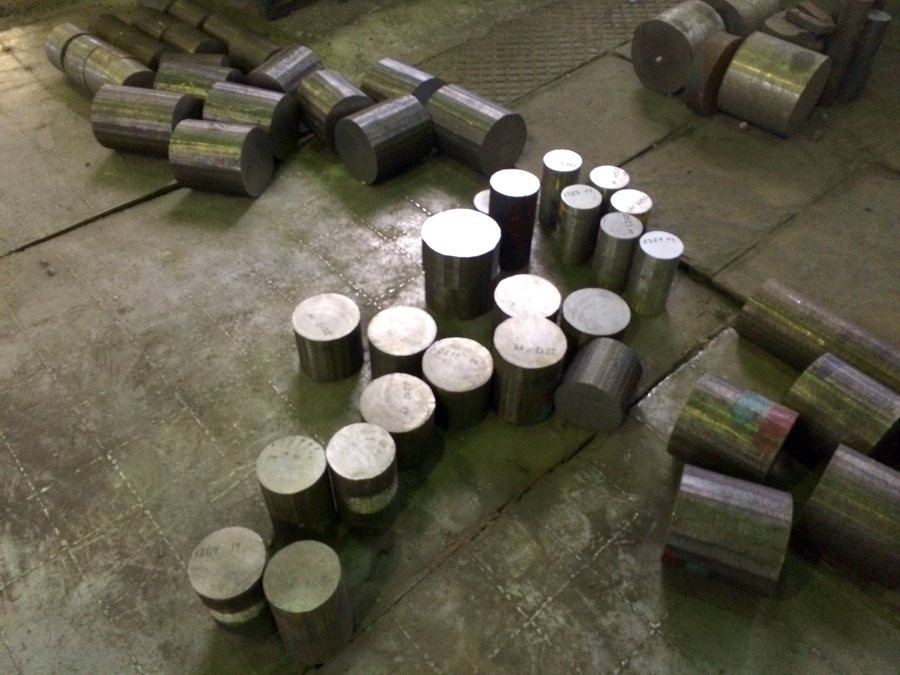
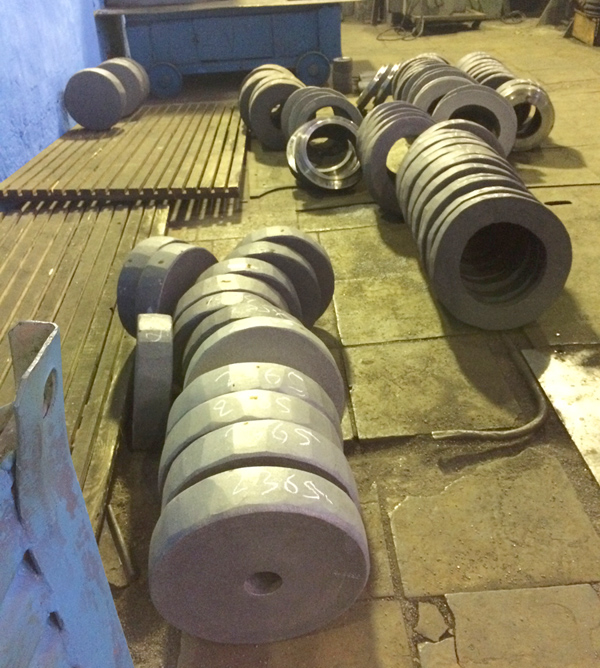
Here, under the roar of gas furnaces, it is processed by vigorous blacksmiths, ...

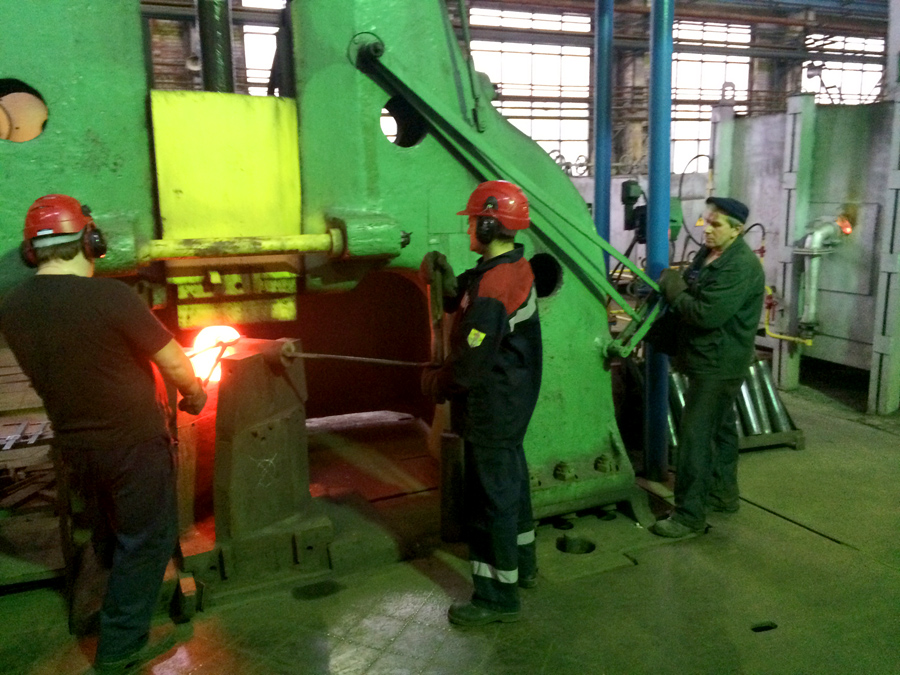
... that handle hot torrid steel rings like toys.
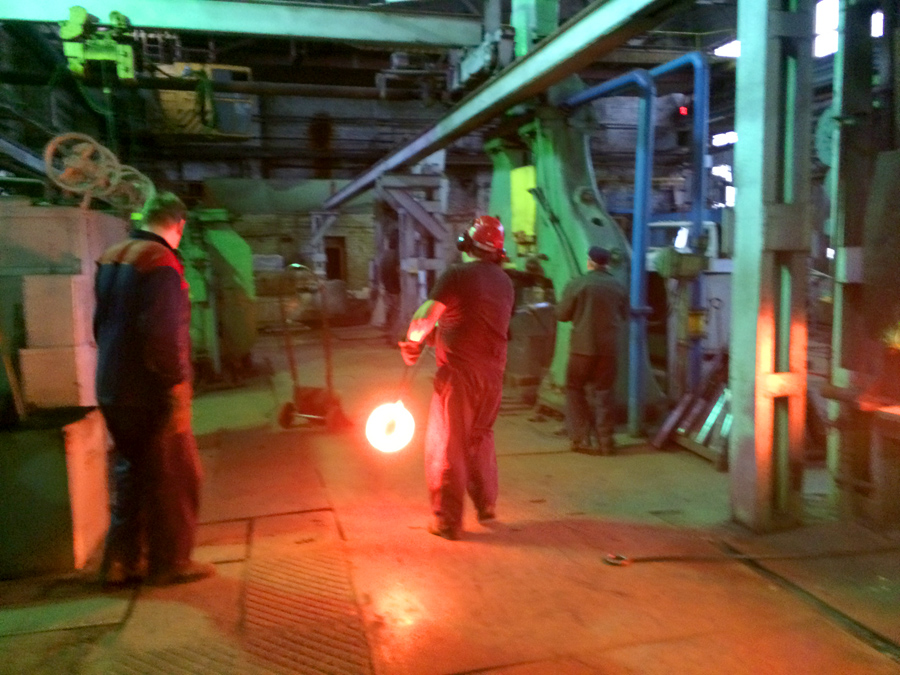
"Three rings - to wise elves - for the good of their proud ..."
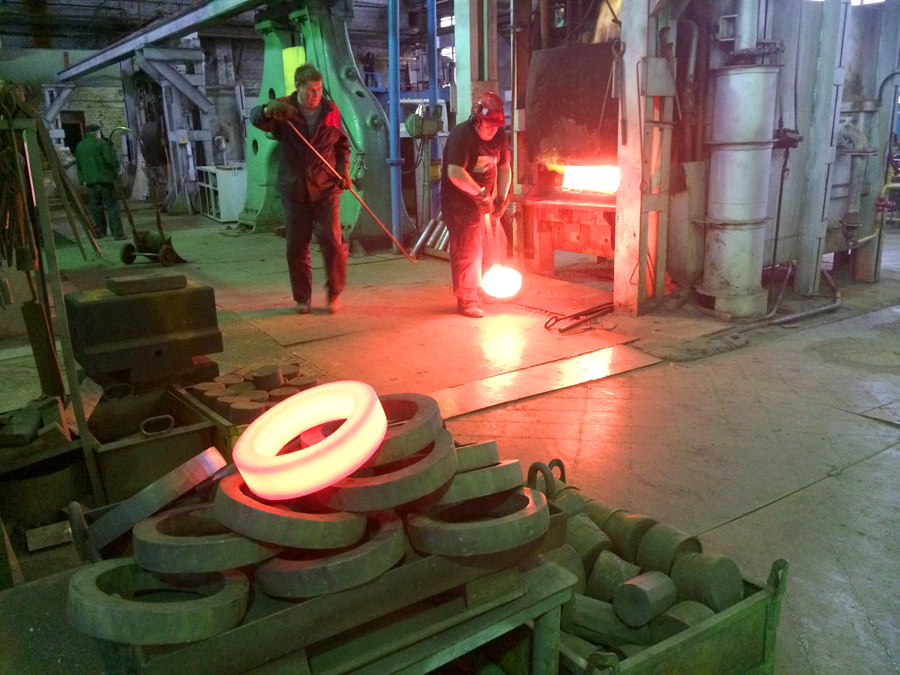
Then we move to the waterjet workshop.
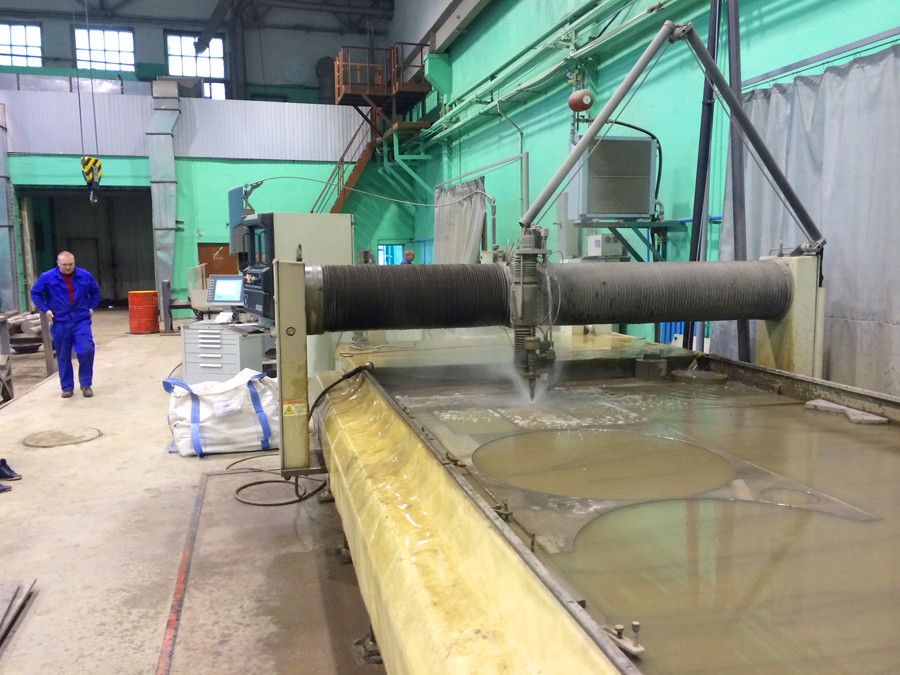
A jet of water cuts steel no worse than Jedi swords.
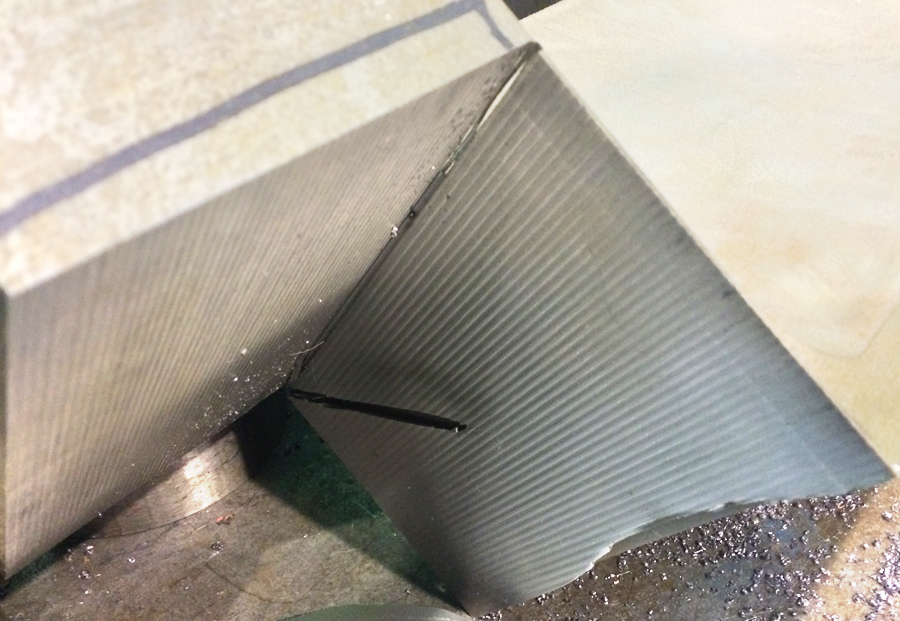
A souvenir to cosmoblogger from cosmogidrorezchikov.

Moving further, look into the foundry. The casting itself does not show, but the products demonstrate after casting. I did not understand the technology, so I can not say why it looks like this, but it looks funny.
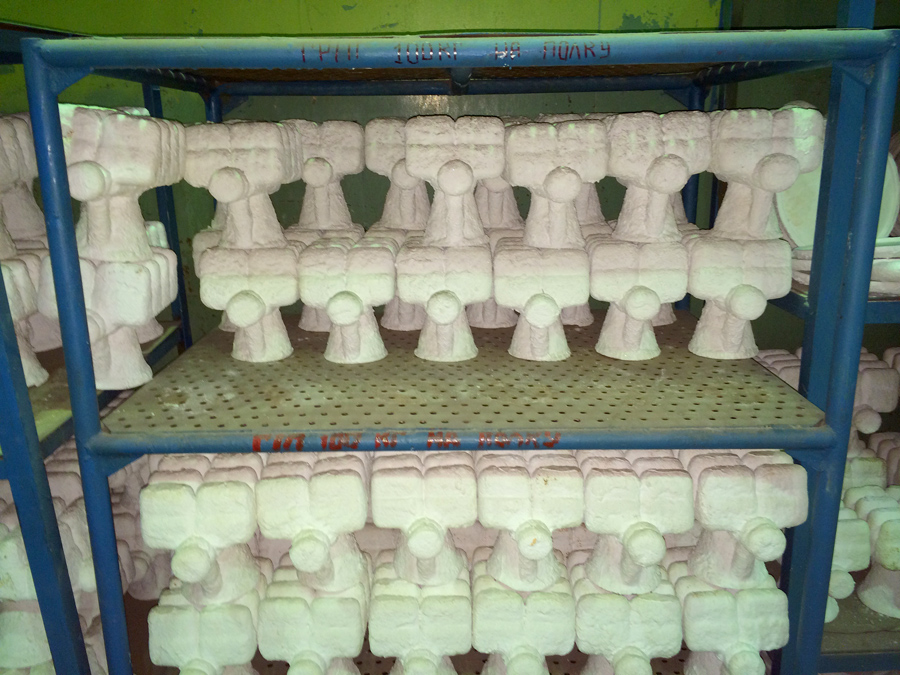

The next item on the program is the machining workshop.
I am being led past several chiseling incisors of lathes from the Khrushchev era, and proudly demonstrate the slender rows of automatic milling five-axis machines. In their work, it is not interesting to shoot them; only vague contours of devices and coolant flows can be seen through the glass. But one target opens and I rush there with the camera in my hands.

Oh, so this is our old friend - the rotor of the oxidizer booster pump unit. I can not imagine how such a detail was produced in the 80s, when there was no modern technology. But after all, "Energy" was flying the same ...
Go ahead.
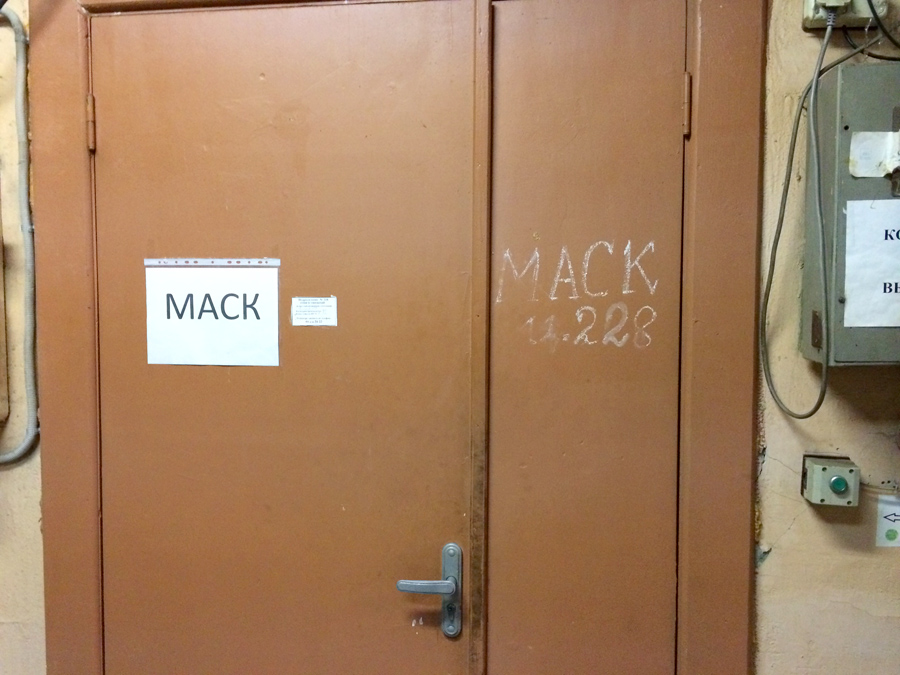
Um ... I do not know what or who is behind the door ... My attendants also could not say.
But on the contrary, they are waiting for us: Department of Metrology and Quality Control.

Elements of rocket engines is difficult not only to produce, but also to verify the accuracy of manufacturing. Here they can.
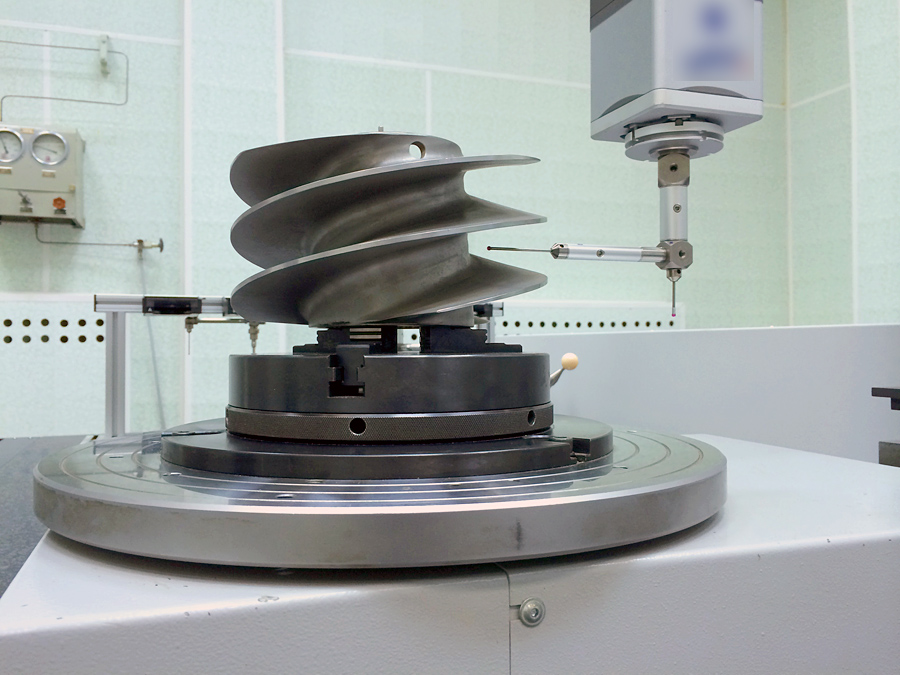
After all stages of processing, fine-tuning and quality control, the parts fall into a huge final assembly shop. It is more difficult to get into it - additional passport control, bathrobes and shoe covers.
And at the entrance rolls Soviet cosmic nostalgia.
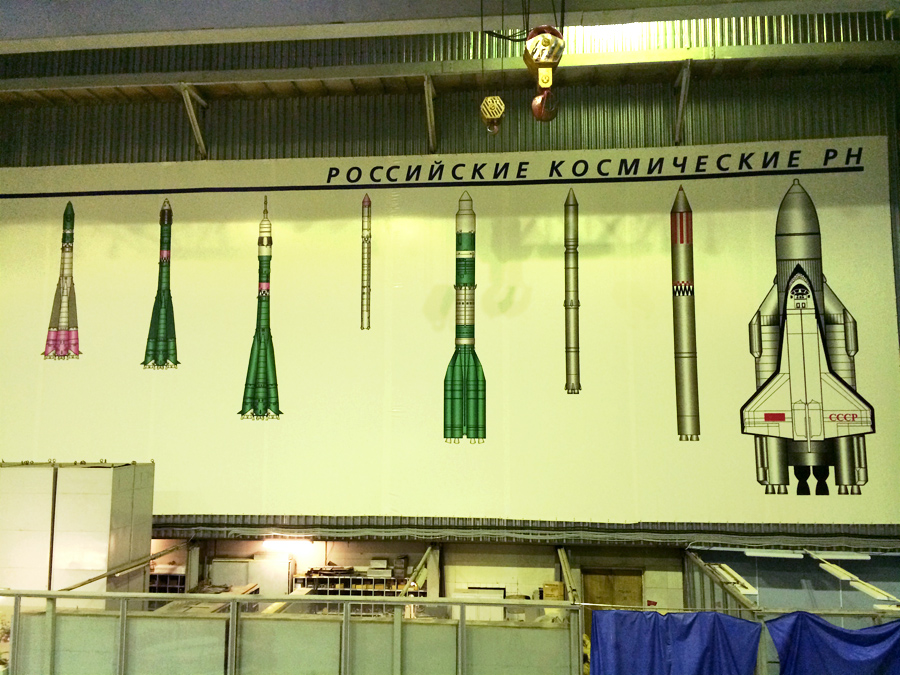
Immediately obvious - remember here!
Even twisting the new unit for the American rocket, the Power-Masters do not forget that they raised their own space.

I was going home, and the RD-191 for Angara was going to space.
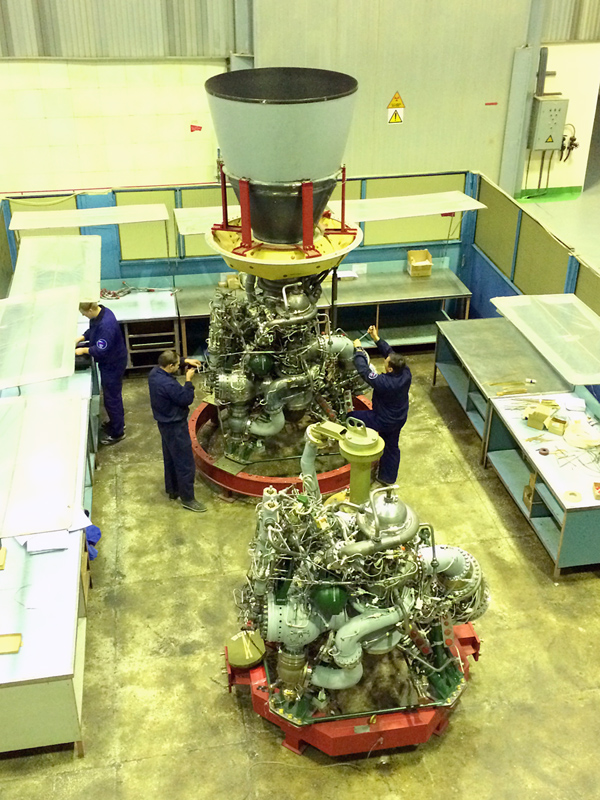
What to say in conclusion?
The plant is working, and loaded with business already to the 20s. It is bad that because of the political games of the outgoing year, the production of Soviet pride, the unsurpassed RD-170, almost stops. It was used in the Ukrainian "Zenith", but in the current situation there is little hope of continued co-production. There are difficulties with the export "RD-180", on which half of the American cosmonautics fly on the United Launch Alliance Atlas-5 missiles - the order ends in 2018. Extend not going. Some people came out about the trampolines. Now the Pentagon is ready to invest hundreds of millions of dollars to develop its own analog, just not to depend on Russian products. True , Orbital Scienses came to replace the ULA with the Antares rocket, and an order for the RD-181 under the International Space Station's supply program. NASA is not as important as the military. Years of peaceful cooperation in space were not in vain, but for the ISS they need much less.
There is still an order for the RD-191 - for the Russian Angara, but its volume is completely dependent on the demand for a rocket. While the Proton is flying, there is no reason to believe that there will be work for Angara, except for experimental launches.
Energomash is currently developing promising methane engines. This is the fuel of the future, it does not leave carbon on the engine elements, which facilitates their repeated use. True, reusable rockets are not yet available in the nearest Russian plans, but there is hope that, through the efforts of Ilona Mask and SpaceX, enlightenment will come, and awareness of the need for such missiles will come to Russia.
I express my gratitude to the Information Policy and Media Department of the United Rocket and Space Corporation and the press service of NPO Energomash, for their help in organizing the filming .
Source: https://habr.com/ru/post/375157/
All Articles